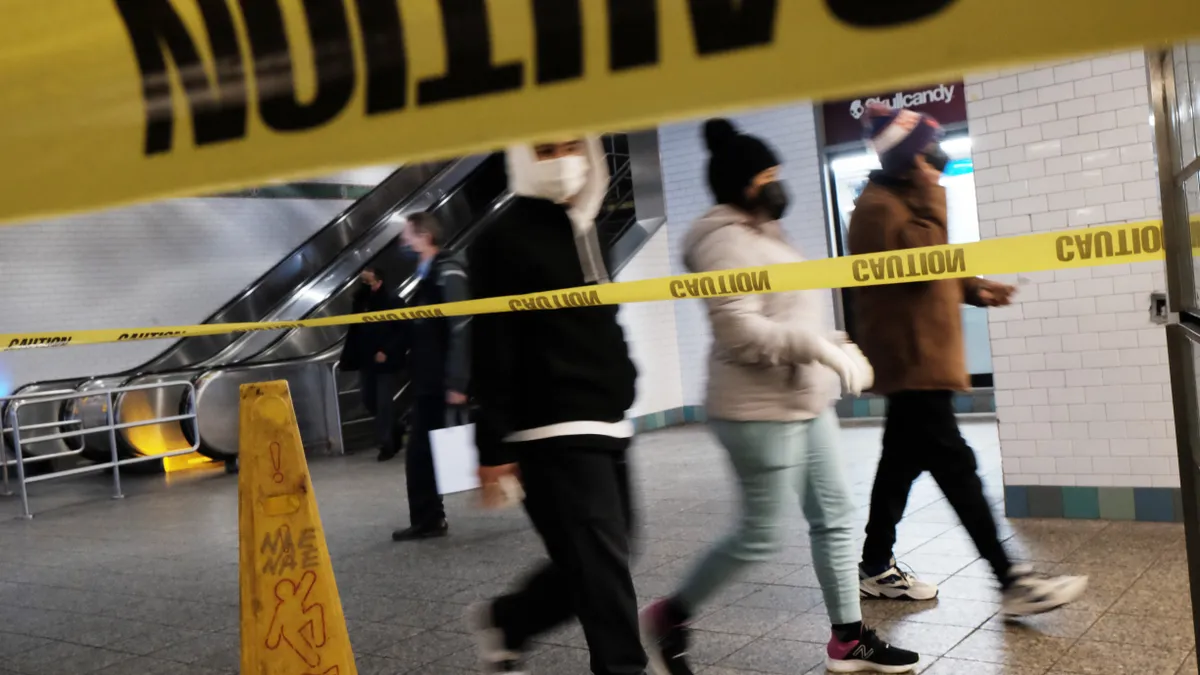Dive Brief:
- The Federal Transit Administration recently published new resources on its website to help transit agencies prevent crime in their systems.
- The content includes a research report it conducted in partnership with the U.S. Department of Transportation Volpe Center to learn more about customer assaults on transit property and vehicles and how transit agencies are working to mitigate and collect data on them.
- From 2008 to 2022, the injury rate per 100 million passenger trips jumped almost 294% and fatalities rose 300%, the report states.
Dive Insight:
Transit crime rates grew in several large cities in recent years even as ridership declined during the pandemic. According to the Bureau of Transportation Statistics, the number of assaults and homicides were among the highest in the 2019 to 2021 period compared with previous years. High-profile crimes, such as New York City subway riders being pushed in front of oncoming trains, can make transit riders feel unsafe.
The research report identified numerous societal issues contributing to the rise in transit crime, including homelessness, substance misuse and mental health crises. The report also noted that many assaults begin as minor conflicts.
The transit agencies that participated in the study all conducted some form of social service outreach to people in crisis, but these programs were in the early stages, and the evidence of their effectiveness was inconclusive. Among the crime deterrents the transit agencies report using are policing, surveillance cameras and environmental design such as fencing, hardened fare gates and lighting. But the report noted that the effectiveness of any of these actions to reduce crime depends on how it is implemented, and effectiveness can vary depending on the transit system in question.
A variety of FTA funding programs can be used to support crime prevention measures such as increased lighting, camera surveillance systems, security services and equipment.












